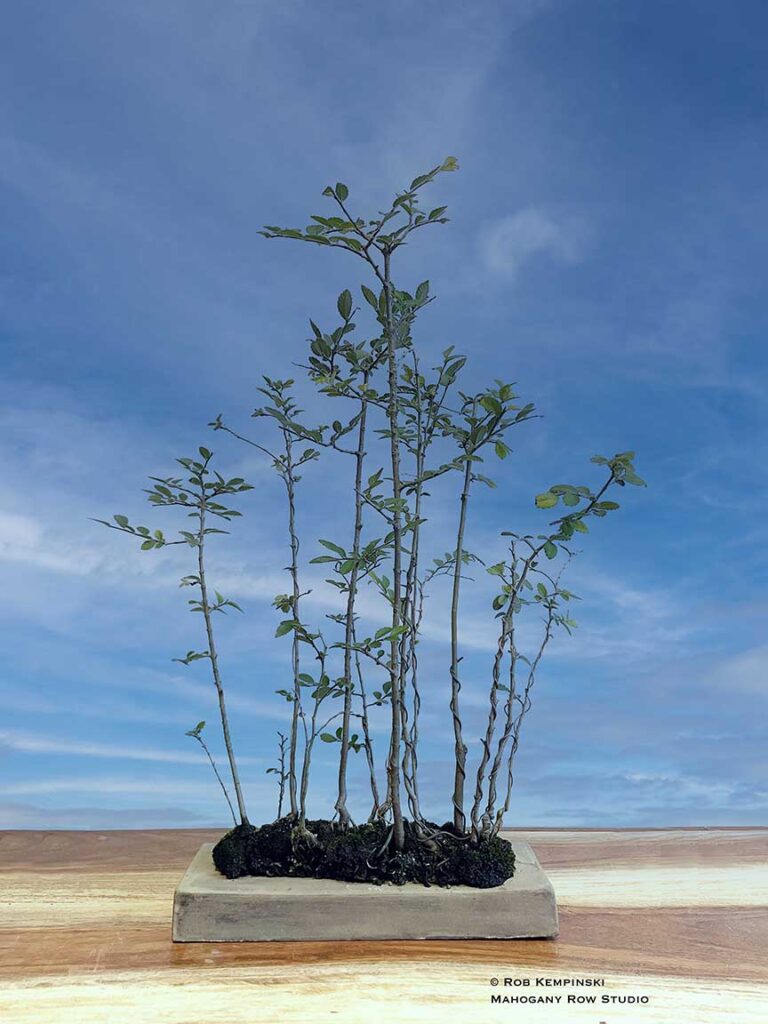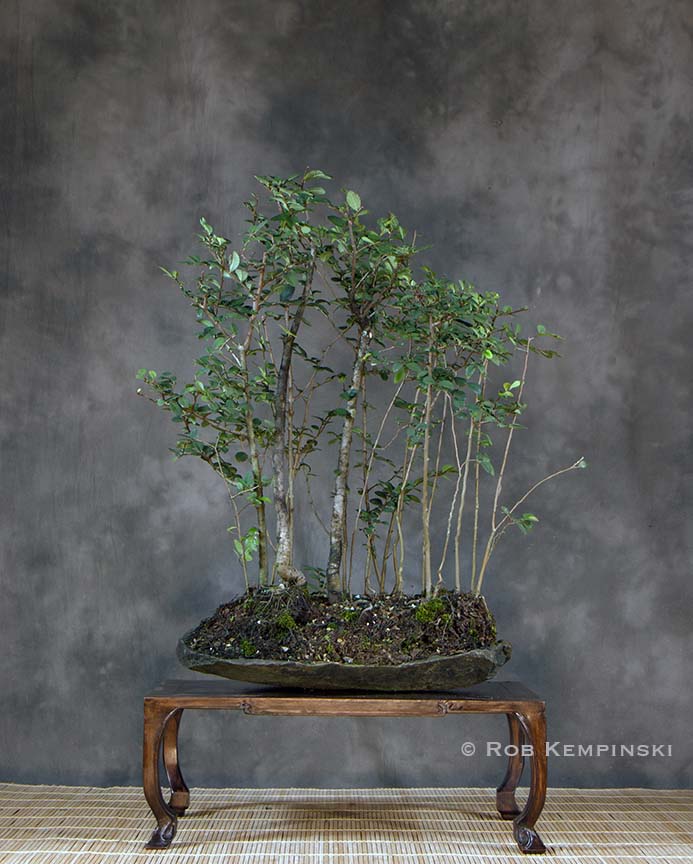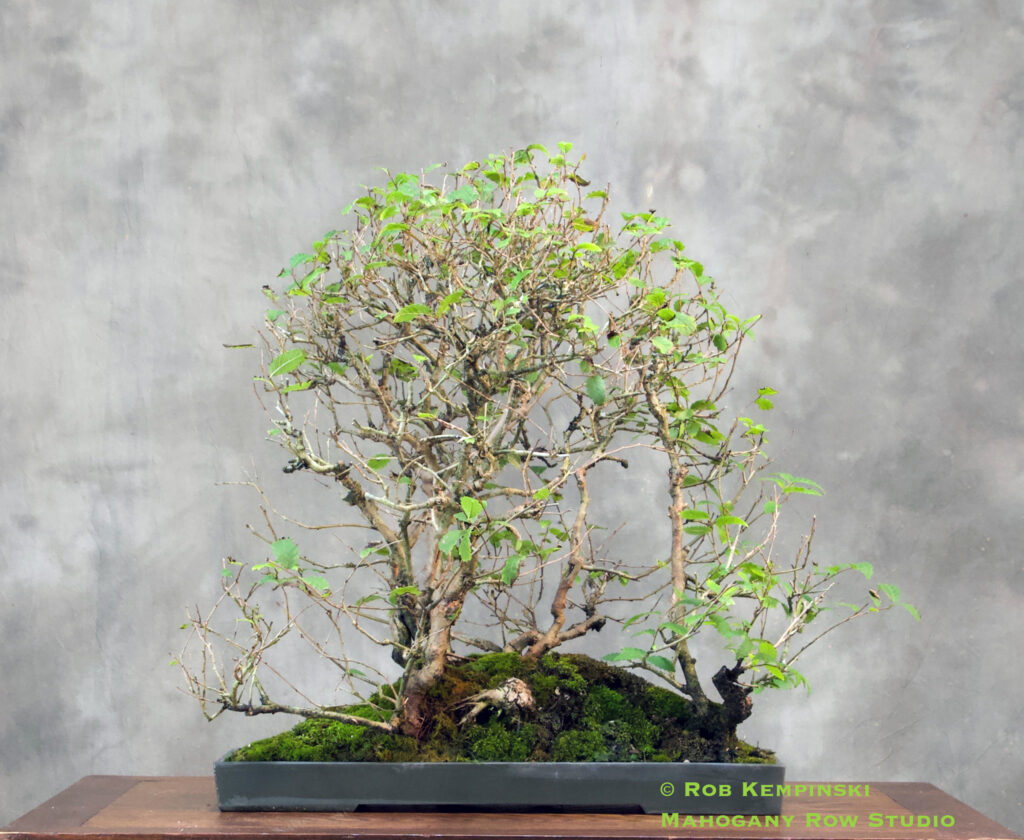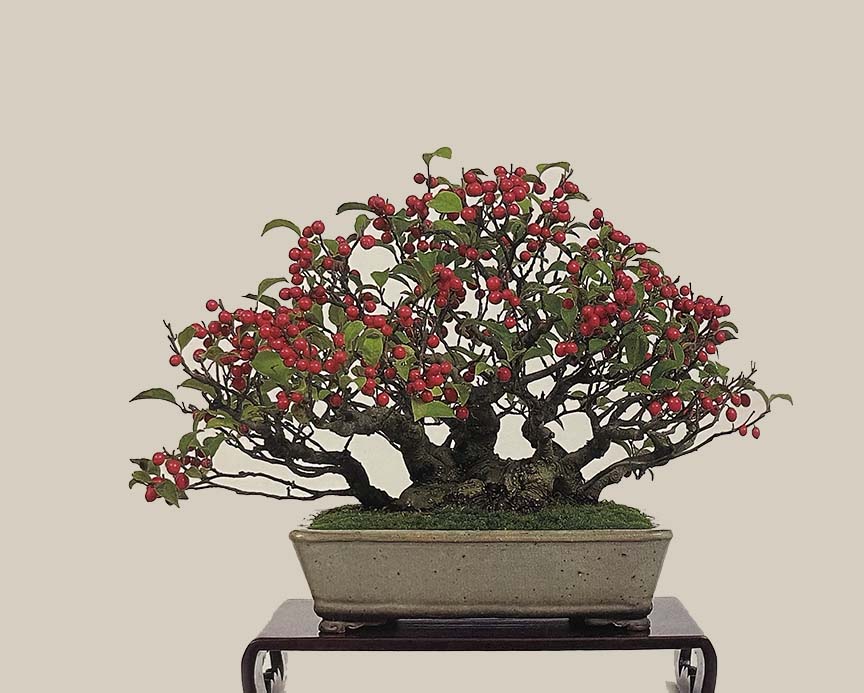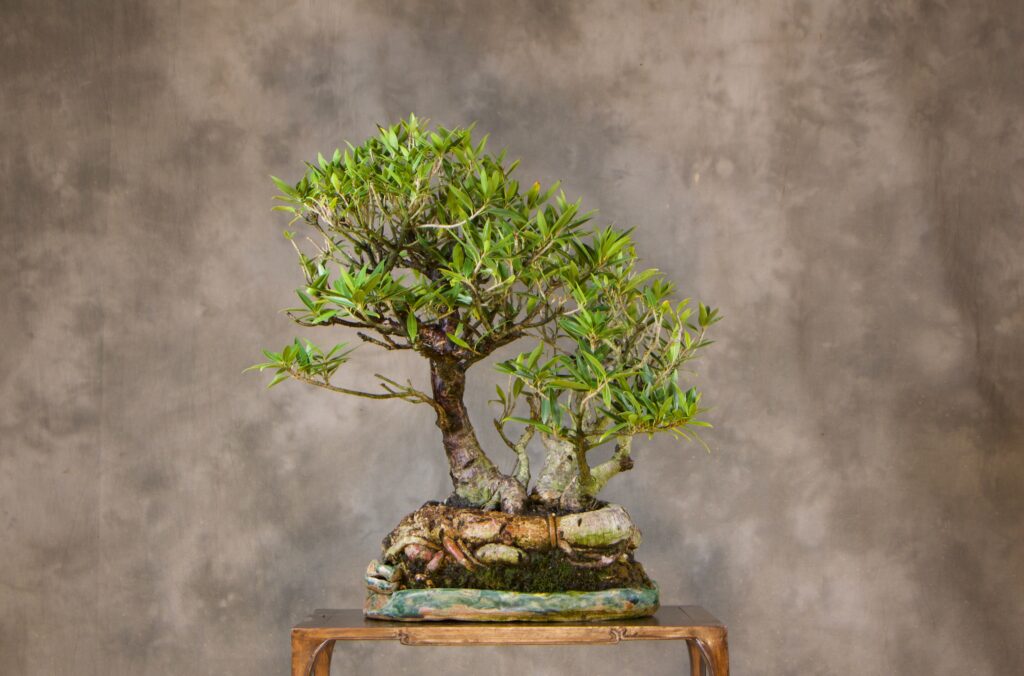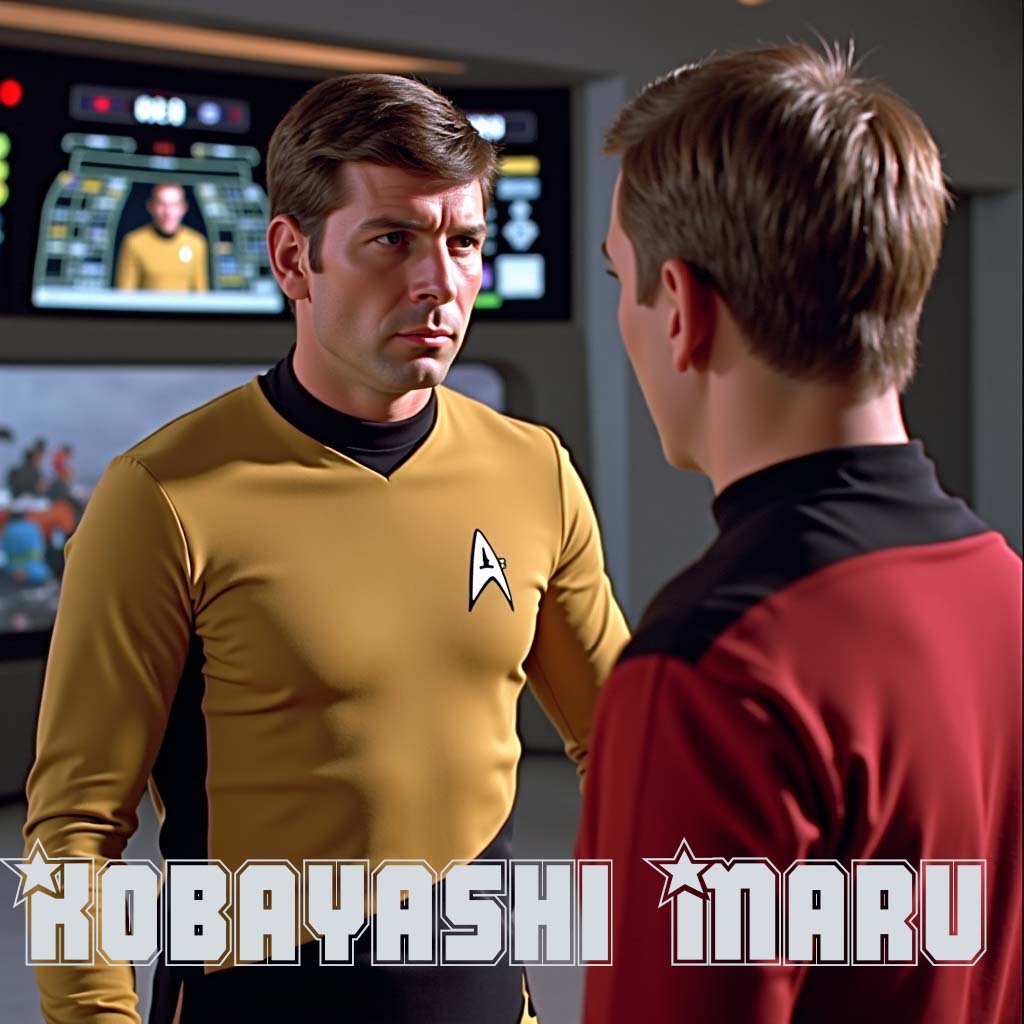
Star Trek II: The Wrath of Khan reveals Captain James T. Kirk as the only Starfleet cadet to have beaten the Kobayashi Maru test, the intractable training scenario. In that movie, Kirk goes outside the rules to re-program the Starfleet computer to make the scenario winnable. Kirk’s expanding the boundaries should be a role model for us all, but in this case our interest lies not with the scenario but the name Kobayashi Maru, and in particular the first word. Kobayashi is a Japanese name that literally translated means small forest. A comparable name in English would be Calhoun, of Irish origin meaning a small yet beautiful forest.
When one thinks of forest, we usually don’t think small. Conjure the Black Frost, or Fanghorn forest from Lord of the Rings. Bonsai though lets us use our imagination to go beyond natural like Kirk did and to develop a small forest. That is a sylvan planting one can easily hold in one hand.
Small forests have many of the benefits of a large bonsai forest. These include the use of multiple but maybe not ideal single trees, the ability to develop a definitive emotional construct with the added benefit of being easy to handle. Small forests can also be developed in a relatively short time. They can also be relatively inexpensive to create. And if done well can have strong impact.
To make a small forest use the same process one would apply to a large forest planting, just smaller in scale. One key difference use trees with small leaves. Consider using elms, hackberry, figs, Yaupon holly, Nea buxifolia and more. Take a small pot and try to compose something interesting. Don’t worry about norms like a small tree needs to be only 9 inches tall. Style the trees to evince the feeling you want to convey. Trim and water the planting like any other small tree.
